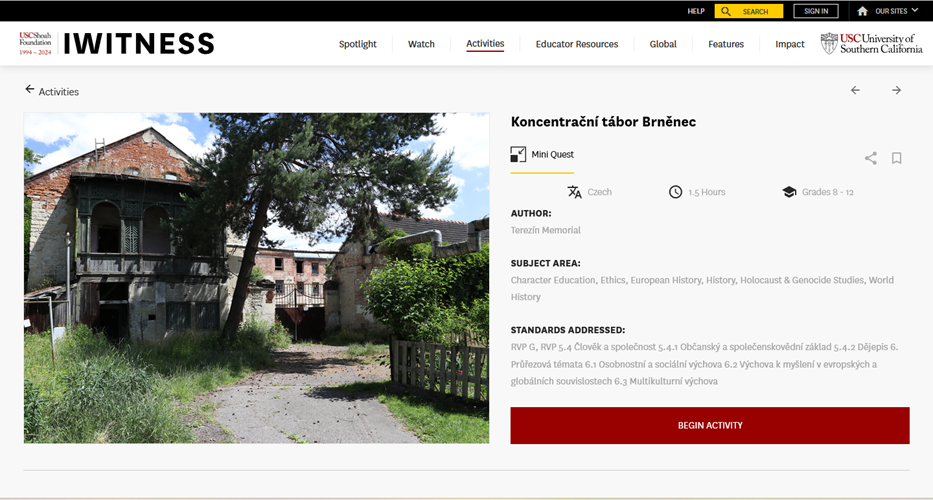In collaboration with the USC Shoah Foundation Visual History Archive and Open Eye, the Department of Education of the Terezín Memorial has developed the Brněnec Concentration Camp activity for the multimedia online educational platform IWITNESS. This content is one of 35 activities currently available to primary and secondary school pupils in the Czech language.
These activities enable teachers to integrate film testimonies from the USC Shoah Foundation archive into their teaching meaningfully. They can be utilized both in and out of the classroom and tailored by teachers to meet their students’ needs.
The activities concentrate on key themes of tolerance, racial discrimination, and social exclusion. They explore the underlying human behaviors that give rise to expressions of hatred, including violent acts and genocides. Furthermore, the activities address issues related to migration and the plight of refugees, manifestations of anti-Semitism in society, and, importantly, fundamental human rights and their violations.

The Brněnec Concentration Camp content is primarily focused on the history of this Nazi repressive facility, which operated from 1944 to 1945 in Brněnec, near Svitavy. Its establishment was closely associated with Oskar Schindler, who built an arms factory on this site. Students will learn about the circumstances surrounding the founding and operation of the concentration camp, the composition and daily lives of its inmates, as well as the process of compiling the actual list of prisoners known as Schindler’s List.
As they complete their tasks, users will be encouraged to reflect on the motivations behind the actions of Oskar Schindler and his wife, Emilie. By studying various texts, visual materials, and Holocaust survivors’ accounts—such as video testimonies from the former Jewish prisoners in the camp Mieczysław Pemper, Robert Brok, and Louise Hermanová, a native of Svitavy—they will understand the distinction between historical facts and media interpretations of these events, including Keneally’s book Schindler’s List and Spielberg’s film adaptation of the same name.
In the following reflection or shorter essay, participants will evaluate various factors that may have contributed to the rescue of a significant number of prisoners from the camp. During the oral presentation, students will share their written texts with one another and address any questions that arise. Finally, they will reflect on the lessons this activity teaches them for their everyday lives.
Sylvie Holubová


